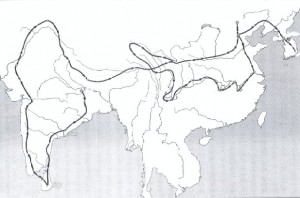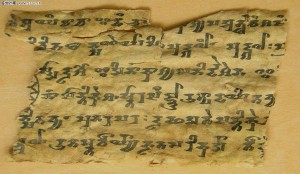C. Pierce Salguero. Buddhist Medicine in Medieval China: Disease, Healing, and the Body in Crosscultural Translation (Second to Eighth Centuries C.E.). PhD diss., Johns Hopkins University, March 2010. 395 pp. [abstract at author’s site/PDF]
Abstract
This dissertation is a study of the role of literary and cultural translation in the transmission and reception of Buddhist medicine in medieval China between the second and eighth centuries. This dissertation brings to light the diversity of medical material in the Chinese Tripitaka, analyzes the central metaphors and discourses in this corpus, and examines how these foreign medical ideas were understood in their historical context. I employ methodologies from Translation Studies to reconcile the study of the transregional exchange of linguistic and cultural repertoires with the agency of individual historical authors as they retooled and adapted foreign knowledge to forward contemporary social strategies. I utilize this theoretical framework to analyze how Indian medical doctrines influenced Chinese Buddhist discourses and practices, while also emphasizing the importance of disease, healing, and the body as sites of crosscultural negotiation.
[via kuden-ML]
Dziwenka, ‘Last Light of Indian Buddhism’ (2010)
Ronald James Dziwenka. ‘The Last Light of Indian Buddhism’ — The Monk Zhikong in 14th Century China and Korea. PhD diss., University of Arizona, 2010. 406 pp. UMI Number: 3412160. [Thanks to A. M.]
Abstract

dissemination and reception of his thought and soteriological paradigm of practice from his native state of Magadha, then Sri Lanka, and then throughout India, Yuan China and Goryeo Korea. The other is [to] explicate the main elements and concepts of his thought and present them to the academic community.
9th-century MS fragments
A few months ago, fragments of a “ninth-century Khotanese MS” were posted on an antiques trading bulletin board in China without further information or comment. The images are of high enough quality to study; they are reproduced (without the necessary flipping, in one case) below.
Dagyab, ‘Tibetisch-buddhistischer Klöster’ (2009)
Dagyab, Namri. Vergleich von Verwaltungsstrukturen und wirtschaftlichen Entscheidungsprozessen tibetisch-buddhistischer Klöster in der Autonomen Region Tibet, China und Indien [A comparison of administrative structures and economic decision-making processes of Tibetan buddhist monasteries in the Tibetan Autonomous Region, China, and India]. PhD diss., Univ. Bonn, 2009, 278 pp. [/PDF]
This dissertation focuses on dGe lugs pa monasteries “not only as especially important centres of Buddhist doctrin[al teaching], but also in terms of their regional social and economic [importance]”, and includes a useful glossary (pp.216–227).
McKeown, ‘From Bodhgayā to Lhasa to Beijing’ (2010)
Arthur McKeown. From Bodhgayā to Lhasa to Beijing: The Life and Times of Śāriputra (c.1335–1426), Last Abbot of Bodhgayā. PhD diss., Harvard University, 2010. 570 pp.
According to a note kindly sent by Dr. McKeown, whom I first met in Kathmandu a couple of years ago, the dissertation “includes the transcription and translation of all three biographies of Śāriputra, as well as transcription and translation of the three siddha biographies (Virūpakṣa, Goraknātha, Golenātha) he dictated to Jñānaśrī.”




